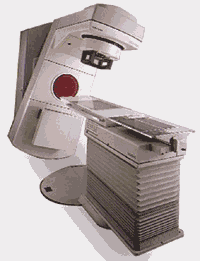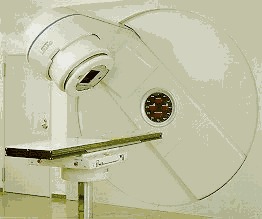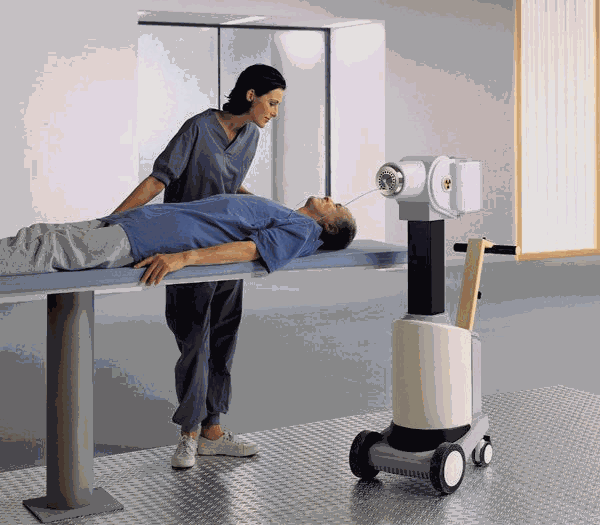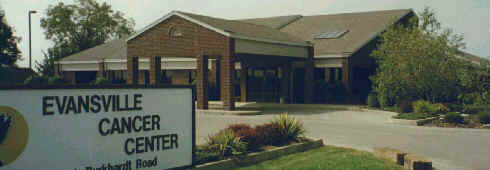




Overview
Cancer Treatment Centers, Our Core Business
 Gemini Medical, Inc. emerged from a successful US based Radiation Therapy
and Medical Oncology practice that has built, staffed and managed over
twenty cancer treatment and other related facilities in the past fifteen
years. Through Gemini Medical, the physician-founder of this practice,
along with a team of other physicians, business and legal professionals,
and medical equipment specialists, now brings this significant expertise
and experience to the development of cancer centers throughout the world.
Gemini Medical, Inc. emerged from a successful US based Radiation Therapy
and Medical Oncology practice that has built, staffed and managed over
twenty cancer treatment and other related facilities in the past fifteen
years. Through Gemini Medical, the physician-founder of this practice,
along with a team of other physicians, business and legal professionals,
and medical equipment specialists, now brings this significant expertise
and experience to the development of cancer centers throughout the world.
We build and operate complete centers for government entities such as Social Security Institutions and Ministries of Health, or enter into joint ventures with existing hospitals or physicians for private centers. Our expertise encompasses every aspect of the development of a successful cancer treatment center including planning, designing, financing, equipping and managing these centers, as well as providing telemedicine links for treatment planning and medical physics services.
Typically, our ventures either involve contracting with the government to treat a large number of patients at a low per-patient cost, or are co-owned by doctors and/or hospitals who can provide a good volume of private patient referrals from local hospitals and other physicians. Either of these structures can incorporate outside investors, public and private hospitals, and physicians. We do not insist on any particular ownership structure, but we have found that projects that are co-owned by local doctors of good reputation or by similarly reputable private hospitals will work best in the private sector. For public sector projects, we often provide for transfer of ownership of the complete center, equipment, and all operation to the government entity after several years.
Our recent projects and proposals include:
- Development of a cancer center in a government hospital. Gemini Medical provides design, equipment, management and staff while contracting to provide services for a flat fee for six years. Ownership of the facility is transferred to the hospital at end of contract term for US$1.
- Joint venture development of a radiation therapy department in a large private hospital with a local physician and outside investors. The venture serves privately insured customers.
- Development of a freestanding private radiotherapy clinic with local investors. Staff is recruited from several surrounding regions, and clients consist of self-insured or cash customers.
- A ‘Build, Operate, Transfer’ agreement with a national Social Security agency to provide a complete, three linear accelerator center and all services for 10 years at a flat annual fee, after which ownership and operations will be handed over to the agency. Over 2000 patients per year projected.
The development of a new cancer treatment center is a large, complex undertaking, and a great deal of information and understanding is required by all the interested parties before significant effort, time, and money is expended. With this in mind, Gemini Medical’s principals make frequent trips to existing and planned facilities and will gladly meet with potential partners during these travels.
The core of any cancer treatment center is the radiation therapy, or radiotherapy, practice. This is also the most costly and complicated portion of the cancer center. External beam devices such as linear accelerators or less expensive cobalt machines, which deliver the therapeutic radiation, cost from US$400,000 to over $1 Million when purchased new and require specialized construction to safely shield the radiation within the treatment room. Ancillary services, such as treatment planning and simulation, also require additional equipment and space.
 Fortunately, Gemini Medical has significant experience in providing
radiotherapy in a low-cost, professional, and compassionate manner using
the entire range of technologies available: Low and High Energy Linear
Accelerators; Electron Beam Therapy; High Dose Rate Afterloaders; and
Cobalt Therapy.
Fortunately, Gemini Medical has significant experience in providing
radiotherapy in a low-cost, professional, and compassionate manner using
the entire range of technologies available: Low and High Energy Linear
Accelerators; Electron Beam Therapy; High Dose Rate Afterloaders; and
Cobalt Therapy.
Although most radiotherapy delivered in the US today is on linear accelerators, there are many cobalt-powered machines in use, and new units are still placed in service. The cobalt machine is not only less expensive, but service costs are also lower. However, since the radiation delivered from these machines is less penetrating, we typically use cobalt machines in a dual machine center, where linear accelerators are used for "deep" cancers, and the cobalt machine for "shallow"' cancers, such as cancer of the head and neck. We also use cobalt machines in areas where the economics warrant a very low cost approach to care.
Another technology commonly found in our busier centers
is High Dose Rate Afterloading. The HDR device allows the physician to
effectively treat cancers on an outpatient basis that are more commonly
treated in hospital operating theaters by insertion of conventional (low
dose rate) isotopic sources.  The utilization of the outpatient
technique removes the need for an operating theater, anesthesia, post
anesthesia recovery and housing the patient in an isolated -radiation
protected unit for some days. The personnel working with Gemini pioneered
the use of this equipment worldwide and are recognized experts in its
utilization.
The utilization of the outpatient
technique removes the need for an operating theater, anesthesia, post
anesthesia recovery and housing the patient in an isolated -radiation
protected unit for some days. The personnel working with Gemini pioneered
the use of this equipment worldwide and are recognized experts in its
utilization.
HDR is particularly useful in high volume centers in the developing world, due to its effectiveness in the treatment of cervical cancers. In the US, Japan and Europe, the common use of the Pap smear and early intervention has greatly reduced the occurrence of cervical tumors that advance to the stage at which radiation therapy would be used. In the developing world however, clinical cervical cancers are very common, and could be treated with HDR, which is safe, effective, and less expensive than low dose rate surgical implant therapy.
The patient benefits by being able to continue their normal routine since the therapy sessions take less than an hour to deliver. Additionally, the hospital benefits by not having a surgical suite, personnel, and recovery beds tied up for each of the 2 conventional low dose sessions. Each of these low dose sessions typically requires a few days stay in a hospital bed, depriving the institution of the use of potentially hundreds or even thousands of bed days.
 We have designed facilities that can economically treat from 300 to
2500 patients per year. Some of these facilities are freestanding, or
completely separate from the hospital environment, while others are housed
within the hospital or attached to the facilities as an expansion. In
any case, we carefully match the facility and equipment to the local situation.
We have designed facilities that can economically treat from 300 to
2500 patients per year. Some of these facilities are freestanding, or
completely separate from the hospital environment, while others are housed
within the hospital or attached to the facilities as an expansion. In
any case, we carefully match the facility and equipment to the local situation.
Typically, our freestanding facilities consist of 3,000 to 6,000 square feet (278 to 556 square meters). A center with two treatment devices, with its own treatment planning and imaging facilities, would consume around 6,000 square feet, but can treat over 700 patients per year if operating only 8 hours per day. Although we often develop smaller centers which are attached to hospitals, we have also been very successful developing centers which are completely free-standing and provide only outpatient care, meaning that the patient requires no hospitalization during the course of radiotherapy.
Outpatient centers usually operate at much lower costs than most hospitals since they can use inexpensive land, and do not have to incur all of the hospital overhead expenses. Comfort is also greatly increased since patients are not sitting in a hospital bed all day waiting for their next treatment. Instead, the patient stays home or with family, and can usually continue with their normal activities. Outpatient centers work particularly well when built next to a hospital with cancer treatment facilities and does not have space to accommodate a new department.
Radiotherapy centers may easily and inexpensively be expanded to accommodate a medical oncology practice, or chemotherapy. In fact, the addition of chemotherapy is often desirable as it expands the range of services available to patients, and serves as an important referral base for the radiotherapy practice. These ancillary services do not require specialized construction.
[Home] [About] [Cancer Treatment Centers] [Facilities] [Contact]
©
Gemini Mecical, Inc.
Site
Design by Latitude
22™